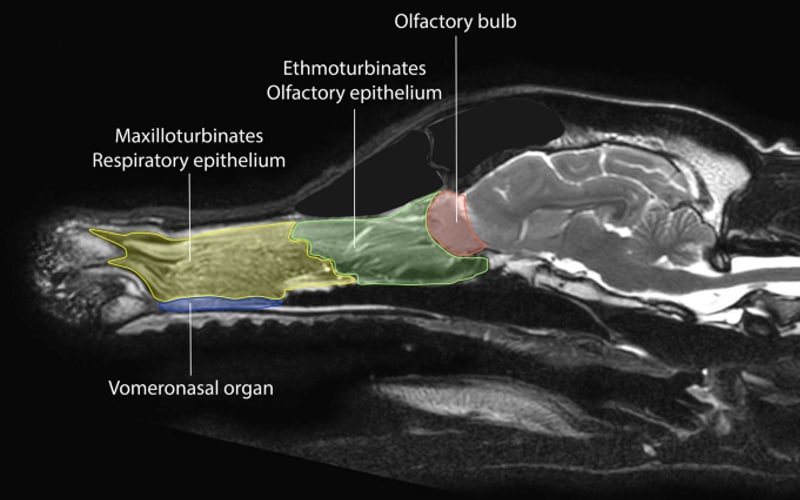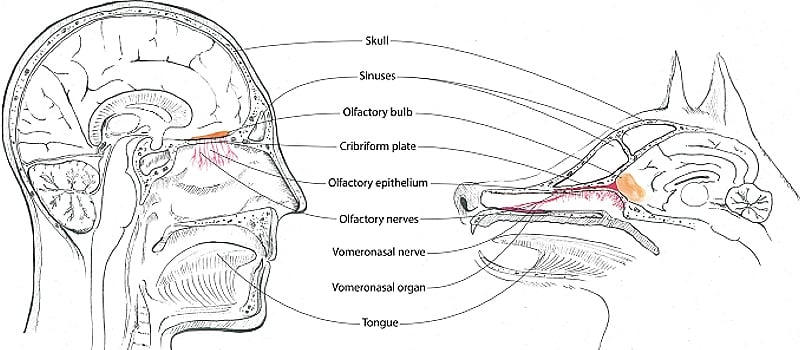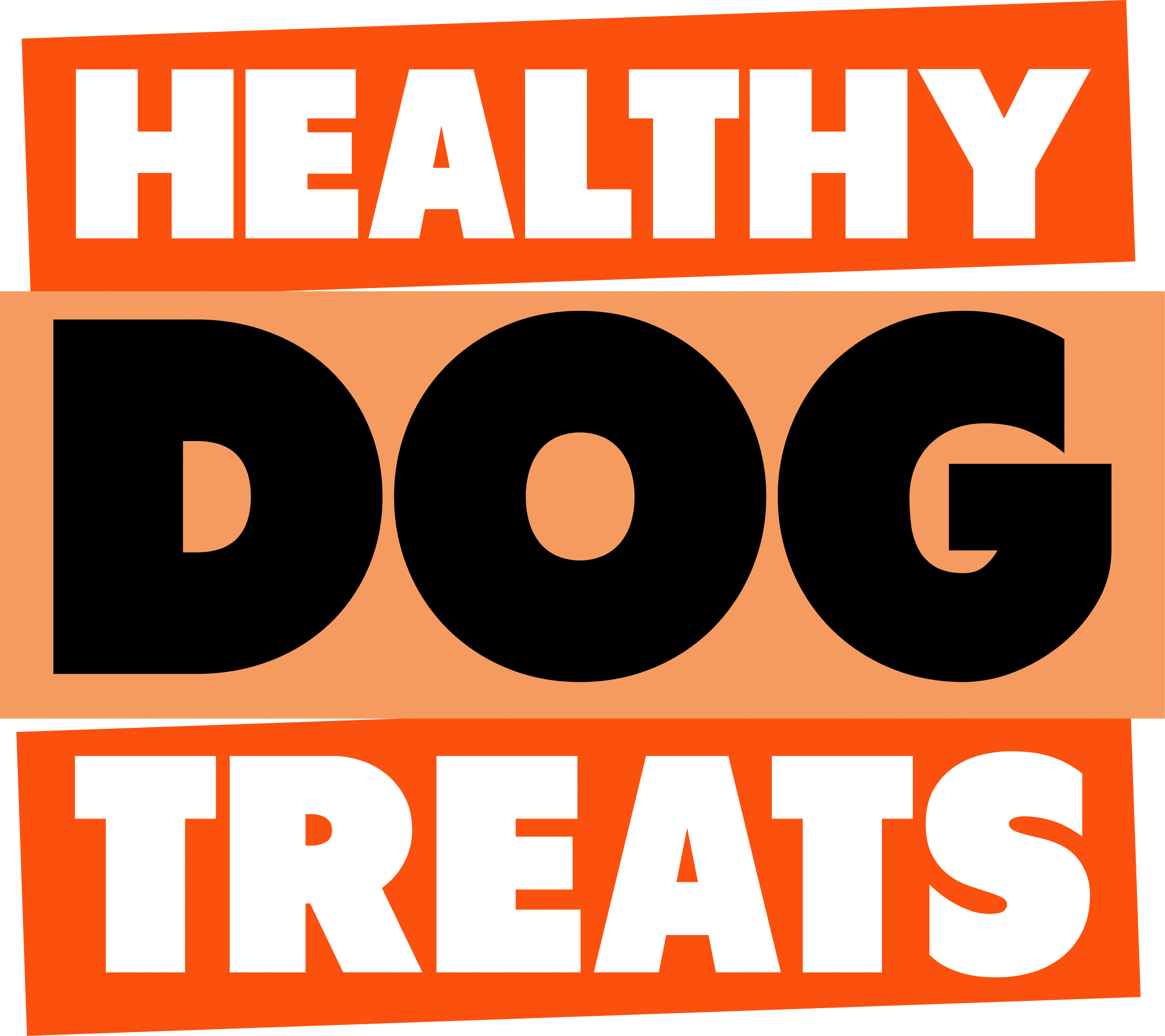Your dog’s amazing Jacobson Organ – and how it enhances their super power of ‘SMELL’ and maybe even taste.

It’s a fact that a dog’s nose is its primary sense organ, and its much more powerful than a humans nose.
The basic mechanics really help, and vary a lot between dog breeds, but in general “100 million to 300 million olfactory receptors in their nasal cavity, while humans only have about six million. Their nasal tissues, or epithelium, are about 30 times larger than that of humans. “ ref 1
We have written articles on dog’s taste buds before, and the remarkable fact that they can actually taste water, but they tend to have much fewer taste buds on their tongue than humans. So that might explain why they might be less choosy with what they eat (off the street) … but that is where the Jacobson organ comes to the rescue.
It is a well-known fact that much of what we consider taste to be is actually provided by our ability to smell the food. Block your nose and eat one of your favourite treats, and you will know what I mean.
And so, it is very possible that much of a dog’s enjoyment, or enhancement of their eating experience is created by the uniqueness of the Jacobson’s or vomeronasal organ, that humans simply don’t have.
There is a high chance that this organ evolved to provide a survival boost. If a wolf (or wolf evolved dog) can smell prey or predator from a long way away, they can make vital decisions much earlier. And this organs very existence also means that they can potentially “taste” things well beyond what the limited number of taste buds should suggest that they should be able to detect.
Before we speculate too far, lets look at some more detail of the amazing Jacobson organ in your dog.
Your Dog’s Jacobson’s / vomeronasal organ

While this organ plays an important function in mating between dogs, it also helps puppies find their mother and their milk source.
“A dog’s nose and Jacobson’s organ work together to sniff out an amazing amount of information that they can use better understand their environment at any given time. You may be able to tell when a dog is engaging their Jacobson’s organ—they expose their nasal cavity to an immense amount of odour molecules by curling their lips and flaring their nostrils. ” ref 1
And from our scent articles you will maybe also know that not only is it the much larger surface area of the inside of a dogs nostril that helps them accumulate information about their surroundings (and food) – but the dogs brain area dedicated to analyzing and processing scents is FORTY times larger than that in a human’s brain.
They can even control air flow independently through each nostril and so can breathe and sniff simultaneously through the separate nostrils.
“ Jacobson’s organ” (also known as the vomeronasal organ) is located inside the nasal cavity and opens into the roof of the mouth behind the upper incisors. This amazing organ serves as a secondary olfactory system designed specifically for chemical communication. The nerves from Jacobson’s organ lead directly to the brain and are different from the nerves in the olfactory tissue of the nose in that they do not respond to ordinary smells. In fact, these nerve cells respond to a range of substances that often have no odor at all. In other words, they work to detect “undetectable” odors.“ ref 2
An additional olfactory system can be found in the vomeronasal organ of dogs

Schematic structure of the olfactory system in dogs and humans
The jacobson organ “sensory epithelium detects mainly pheromones and non-volatile molecules for intra-species-specific communication and reproduction” ref 3
Which suggests that it might not have a major direct effect on food choice for dogs.
But it is speculated by scholars that “Since the vomeronasal organ (VNO) has an important function in intra-species communication or the detection of pheromones and is capable of processing a wide variety of molecules, it may be possible that direct detection of viruses or viral proteins (not VOCs) by the VNO occurs, thus representing a different mechanism of odour perception. However, this is only a hypothesis and has not yet been proven.” REF 3
The secret function of the Jacobson organ for the dog, might be akin to how humans choose stereo products. That is, it might not seem like the Jacobson organ contributes directly to their sense of smell of foods … but just maybe there is more to it.
As an example our human ears can often only hear up to 12 KHz by the time we reach our 50’s. Even though the ‘gold standard’ for audio product frequency range is 20 Hz to 20,000 Hz. AND yet, audio companies still often use x4 or x8 ‘over sampling’ (frequency responses x4 or x8 the maximum frequency that a child might hear – this high resolution audio can sample can be as high as 96 kHz or 192 kHz).
Audio engineers do this in the belief that the interaction of lower and higher frequencies (even though we cant hear the higher frequencies by themselves), is necessary for the full experience. It is also said that Higher oversampling rates make filter design easier as without high sampling the filter would require very steep slopes to be effective in reducing aliasing – which could introduce extra noise.
It could well be that the dog’s ability to sense “non-odour” molecules via the Jacobson organ, somehow adds to their experience and selection of foods. Perhaps some of the molecules in food are non-odour’ types that contribute to the overall desirability of the food?
The more we find out about the complexity of dogs and how they perceive the world, the more wonderous they become.
Reference
Ref 1 Superpowered Snouts: All About Dogs’ Sense of Smell. Apr 1, 2022 www.ellevetsciences.com/pet-care/superpowered-snouts-all-about-dogs-sense-of-smell/
Ref 2 Why Dogs Sniff Rear Ends. By Ryan Llera, BSc, DVM; Lynn Buzhardt, DVM
Ref 3 Canine olfactory detection and its relevance to medical detection. Paula Jendrny, Friederike Twele, Sebastian Meller, Et al. BMC Infectious Diseases volume 21, Article number: 838 (2021) Cite this article


